I recently took part in MOSAÏQUE, a “feedback format” organized by ECHO LOT at a space called Das LOT in Vienna. I am grateful to have had this opportunity. It was a transformative experience.
I am a writer, but for a long time my writerly identity has been primarily about being a writer who doesn’t finish things, who doesn’t publish things, who is blocked, etc. It’s a tedious identity to carry around, and I have been working on shifting it. The MOSAÏQUE call for applications from artist participants came at just the right time. The theme for this edition, the seventh, was The Fear of Ending.
The application invited me to describe my process and reflect on why I sometimes struggle to bring my work to an end. I had plenty to say about that, and as someone who is still developing the habit of thinking of what I do when I write as a process, it felt empowering to write about my work from this perspective.
I wrote about graduating from an MA in Creative Writing, being accepted onto a PhD that would have involved writing a novel along with a companion piece about my process, and choosing instead to go back to my life in Bologna. My partner didn’t want to move to England, and I didn’t push.
I wrote about the 20-year period during which I stumbled into and then intentionally built a career in higher education administration. During that period, I carried and birthed two children and served as our family’s main breadwinner. I tried for a while to keep doing “literary things”, which for some years involved translating Italian novels into English, late at night, after the kids, then very young, were in bed, but there came a time when I stopped having the energy to do keep this up.
I wrote about burning out and where I am right now: working out what comes next.
I wrote about the fact that there are many things I would like to write about and share, including fiction, but that when I sit down to write, regardless of the stories I think I want to tell, topics at the intersection of my personal experience and family history clamor for my attention. These stories intrude and expand in ways that feel beyond my control, everything seemingly connected to everything else, one parenthesis opening and then another, all of it mushrooming outwards until I give up on finding a form to contain the stories and stop writing, only to return to them in a new project after months or even years.
Sometimes, I feel like I am doomed to circle around inside these stories indefinitely. I sometimes wonder whether the only way I will ever be able to finish any other writing is if I finish these pieces first and release them. Lately, I have started reading at open mics organized by the Vienna Storytelling Collective as a way to get the stories out there. It is sometimes scary but also fun to read these stories in public, and it’s rewarding to declare they are finished and release them. I wrote about this in my draft application, as well.
When I finished writing, I edited it all to fit within the spartan word limits of the call and selected two samples of my work for inclusion: a zine I wrote in 2020 called Excavating the Basement Part 1 and some snippets from a work-in-progress called apologies for all the parentheses I opened but did not close. I felt energized and excited after sending off this material. The mere act of applying to a feedback format for artists and sharing two pieces of work felt like a meaningful thing to have done.
A couple of weeks later, Jana from ECHO LOT emailed me saying I’d been accepted. She invited me to a call to talk about how I thought I would share my process with the audience. An image came immediately into my mind of a bunch of tangles hanging in a space. I sketched it in my notebook.
On the phone, I told Jana about my idea for an installation. I would make the tangles using yarn and pictures and snippets from my stories. Possibly, I would also include a reading from my work and maybe even role play during which audience members would brainstorm answers an artist might give to people who feel a conflicting sense of ownership of the stories that she tells or even feel betrayed by her work.
Jana seemed to find the installation idea exciting, and the role plays, too. But she emphasized that I should in no way look upon this as a performance. The goal was to open my process up to the audience and receive useful feedback.
She asked me to share what I thought of as my most important question for the feedback format. I said it had to do with transforming the tangles into a source of energy.
Jana described the shape of the evening. There would be three artists. Each of us would have 10 to 15 minutes for our presentations. Afterwards, members of Flugwerk, a Berlin-based collective specialized in feedback methods, would facilitate personalized feedback methods developed especially for each of the artists. The feedback methods would involve the preparation of food. This sounded somewhat arcane as well as extremely cool. I found myself wishing I, too, could be a specialist in feedback methods who belonged to a collective based in Berlin.
I didn’t tell Jana, but the tangles have been with me for a long time. Twenty years ago, in graduate school, I wrote a story about a girl whose grandmother, confined to a mental hospital, alternately wound yarn into tangles or wound it into balls that she used to crochet afghans, depending on her state at any given moment. My final project for the MA was the first chapter of a novel in which a girl whose father has possibly abandoned the family tries to clear away a tangle of bushes in her parents’ back yard, one thorny branch after another, because she wants to plant the lawn her mother yearns for. It’s very hard work. Ultimately, the girl gives up.
Now, so many years later, I am finally accepting this truth: life is too short for me to untangle each and every tangle in order to turn them into something new, like the schizophrenic grandmother, and if I use up all my energy trying to hack my way through them, there’s still no guarantee I will get to the end. Neither districation nor chopping are working for me. It’s time for something new.
I drew another sketch of my tangles during our call.
In between the meeting with Jana and the event itself, there was a planning meeting at das LOT with some of the team from ECHO LOT and the two other artists, Natalia and Vito. Das LOT, where ECHO LOT organizes art events and concerts and workshops, is one of many spaces in the Brotfabrik, a former bread factory in Vienna’s tenth district that has been restored as a cultural space. It has six meter ceilings and exposed brick walls. It’s a flexible and vibrant space.
Natalia and Vito’s projects and questions were very different from mine. Natalia is a singer and Vito makes astonishing art that I am not sure I have the right words to describe. Natalia planned to use her participation in MOSAÏQUE 07 to play with a musical project she’d been experimenting with for some time, a project inspired by a lunar eclipse that was freer than her main work as a singer and built upon her voice, recorded sounds, and movement involving light and shadows. Vito’s participation would center around an object he had built called a people catcher—something which he said actually exists and is even used by law enforcement in some countries. This sounded mysterious, intriguing, and a little scary. While presenting his process, he would possibly make use of an old school overhead projector, a prospect many of us found rather thrilling.
In the days leading up to the event, I sourced yarn and cables and played at creating my tangles, which started to appear around the house. Jana reminded me that MOSAÏQUE 07 shouldn’t be about making tangles, but about opening my process and getting feedback. I agreed, but if I was going to transform my tangles from blocks into sustenance, the tangles for the installation needed to be as beautiful as possible.
But how would we hang them? Jana’s colleague Julia, another member of the ECHO LOT leadership team, encouraged me to consider hanging the tangles from the ceiling. She said it wouldn’t be difficult, because there were people at ECHO LOT who were very comfortable climbing up das LOT’s industrial stepladder.
The day before the event, I went over to das LOT to hang the tangles. Unfortunately, no one who was there that afternoon knew how to safely use the ladder. They set it up, but something wasn’t quite right. Twice, it slithered out of its shape, once even crashing to the floor.
I parked my tangles on a coat rack and went away, thinking the installation as I had imagined it might not happen.
Jana had repeatedly emphasized to me that MOSAÏQUE 07 itself was meant to be experienced as a process, so I was OK thinking about backup plans. But when I went back to das LOT the next day, a few hours before the event, Tobi was there, and he helped me hang the tangles in no time.
And then, like magic, I saw precisely what I had imagined, right before my eyes.
I was the first artist to present. I alternated between reading snippets of my work and asking audience members to use pieces of string to tie tangles together. This was a physical representation of something especially important: rather than get all bogged down trying to smooth everything out when I write, I can instead focus on creating connections between tangles and count on my readers’ ability to do the same.
This whole process with the tangles and the words and the string was very useful for me. I got exactly what I wanted: it was like a spell. I got to envision something tangible I wanted for my work and have the experience of seeing that thing come into existence.
The feedback methods were surprising. Together, they became a meal. The method Flugwerk created for me revolved around appetizer skewers that audience members were instructed to make with ingredients such as cherry tomatoes, squares of pumpernickel, cheese, pickled onions, and olives. Each food corresponded to a specific word, such as intimacy, fear, love, responsibility, borders, confusion, trust, focus, structure. Audience members were invited to work in pairs to make a skewer that reflected what they thought I could continue to build on in my work, then take a polaroid of the skewer and write a message for me on the polaroid. I chomped on chunks of gouda and olives as I watched this process unfold. In parallel, Natalia was receiving feedback via a process that involved breads and spreads. The process devised for Vito was dessert prep that involved whipping cream with whisks and writing questions on squares of paper.
Then we all sat down at a long table for bowls of delicious lentil soup from a Turkish bakery down the street. Each place setting included a napkin upon which an audience member had written some words of encouragement regarding the theme of endings. During the meal, we were invited to read out the words on our napkins and discuss. I had an enriching conversation with the woman across from me, whose artistic practice, it turned out, includes performing as a drag king. The whole evening made me hopeful about meeting other writers and artists and expanding my artistic community here in Vienna.
Some of my most useful takeaways did not come specifically through the feedback methods but rather from the whole experience of MOSAÏQUE 07 itself—takeaways from figuring out how to present my process in just 10-15 minutes, deciding how to involve the audience, sharing fears and doubts about my work, and co-creating an event whose shape unfolded as we went along.
One thing at which I excel is packing in too much—into my days, into my work, into my expectations of others, into my goals for my writing. This seems to date back to early childhood. My parents tell me I used to ask them to give me “the too much” when they served me at meals.
I mentioned my idea of cramming a role play into my presentation at MOSAÏQUE. The day before the event, when I went over to hang my tangles, I mentioned I was thinking of making a flipboard poster that I would use to ask people in the audience to propose answers to prompts containing statements I fear could be made in response to my work. I was thinking along the lines of a quirky moment of theater during which the audience members would script witty retorts based on the premise it’s my right to say whatever I want. The team at das LOT was concerned that my asking the audience to respond to these prompts would constitute directly asking for feedback, which was supposed to come via the feedback methods themselves. Jana invited me to send her the prompts so that Flugwerk could incorporate them into the method they developed for me.
I sent them without any explanation. At the event, the prompts themselves were never voiced, but looking back, I couldn’t shake the feeling that this list of what might be seen as basic, rudimentary prompts had possibly impacted the way my feedback method was structured. It was gentle, and fun, but also extremely indirect. Maybe Flugwerk had decided I was a person who was too delicate to take feedback unless it came with kid gloves. This conflicted with my desired image of myself as tough and ready for my work to go out into the world …
… although to be honest, when I read aloud from my work that evening, my voice trembled as if were recounting a traumatic event. (This happens to me more frequently than I would like. It’s something I am working on at open mics. I love it when seasoned storytellers talk about the most emotionally sensitive things without losing control over their voices.) And later in the evening, a member of the audience asked me whether the tangles themselves represented my traumas. I was surprised by this question. I hadn’t consciously thought of the tangles as representations of traumas at all, and still do not. It was useful to know that this was something at least one audience member took away from my presentation of my process.
Somehow, all of this together led me to the conclusion that I have more agency than I tend to think regarding how I frame my work when I share it with others and also in terms of how I characterize myself. The fact that certain personal and family experiences clamor for my attention when I write in no way obligates me to reveal all of my vulnerabilities when I present myself or my work to the world—or even to finish and share those stories as memoir. This may seem like a rudimentary thing to have realized, but living this realization through participation in MOSAÏQUE 07 (and not just knowing it intellectually) was significant.
A couple of weeks after the event, there was a debrief with the artists, Jana, and Hans-Christian, another member of the ECHO LOT leadership team. It turned out that the other artists also had questions about the feedback methods and thought that some of them had perhaps been rather light. This led to a lively conversation that included sharing about and reflection from the ECHO LOT team about the layered way Flugwerk structures feedback over the course of an evening as well as about the theoretical underpinning of the MOSAÏQUE events, which, it turns out, are meant to serve not just the artists but also the audience. I learned a lot from this discussion and appreciated the ways in which Jana and Hans-Christian invited and responded to feedback. The debrief meeting itself was an extremely valuable part of the whole MOSAÏQUE 07 experience.
A funny thing kept happening while I was taking part in MOSAÏQUE 07. ECHO LOT had made lovely pale lavender postcards to promote the event. Now and then, I would see one and misread it as The Ending of Fear rather than The Fear of Ending. Each time this happened, I took it as a helpful, hopeful sign.
Epilogue
The epilogue has two parts.
The first part of the epilogue is this: the day after the debrief, I met with a mentor from whom I am receiving advice on my job search. (I left my job in the summer because I knew I needed time to regroup and reflect before embarking on something new.) I told my mentor about MOSAÏQUE 07. When I described some of my challenges with autobiographical writing, she talked about techniques for modifying stories so that they are fictional. I felt like we did not agree on all points, but the fact that she had such strong feelings about the topic really struck me. Working this out was not the goal of our meeting; I need to find a job! But I found myself thinking back on some of the things she had said over the next few days.
Another thing that happened right after the final MOSAÏQUE 07 meeting is that I read Commonwealth by Ann Patchett. I had avoided reading Ann Patchett for decades. I have a tendency to sometimes avoid reading specific critically acclaimed writers, I think because at heart part of me is jealous of their success. (I am trying to shift this, as well.) Ann Patchett was one of them, but then Commonwealth basically jumped off the shelves at me when I went to the library a few days before MOSAÏQUE 07.
I gulped the book down. At first, the book felt well-written and funny and also a little lightweight. But that quickly changed. The more I read, the more I felt like I was reading someone’s traumatic family story, transformed into art and playing out over time with an amazing arc of forgiveness and grace. The book shook and inspired me. After I finished it, I read a 2017 interview with Patchett that had appeared in the Belfast Times. She said that the novel, her seventh, was the most autobiographical of her works. She explained that previously, she’d avoided writing about her family, but then she’d come to the realization that she needed to be able to create fiction from this material, because otherwise, she couldn’t have access to her “whole brain”, her “whole self”. She said she talked about it with her family before she started writing, and then she produced this beautiful book in which, in a book-within-the-book conceit, one of the main characters tells her traumatic family story to a writer who is then inspired by it to write a novel. When the novel in the novel becomes a best seller, different family members recognize themselves, and a part of the beauty of Commonwealth is how this plays out.
According to the interview this book-within-the-book was, for Patchett, “a way of playing out her deepest fears.” She is quoted as saying, "What if I hurt someone's feelings? What if I hurt someone I love? What if I am giving away something that is not mine to give away? These were all of my concerns. By putting them in the book I felt that I had neutralised them in a way."
It felt very liberating to read this. Ann Patchett, an established writer, waited until her seventh novel to write a fictional story inspired by her family experiences, and still worried about how her family would react. My prompts were not so elementary after all. At the same time, I realized that, perhaps childishily, I hadn’t been thinking about the stories I want to tell as belonging to anyone but me.
This felt like a clue from the universe. I should take my time working out what I want to tell and thinking about what it would mean to do that responsibly, towards others and also towards myself. Permission to tell stories has been a big issue in our family, as has authority over what gets included and how. This is part of why it is all so tender. The conversation with my mentor, Commonwealth, and the interview with Ann Patchett, added helpfully to how I am thinking about this now.
The second part of the epilogue is this: one day in mid-December, three weeks after MOSAÏQUE 07, I sat down and wrote an open mic inspired by a story about another family, not mine. It was the first work of fiction I finished in a long time and the first work of fiction I performed at an open mic, very different from the personal stories I had been sharing. And I had a blast. (If you want to check it out, you can find it here. It’s 7 minutes long.)




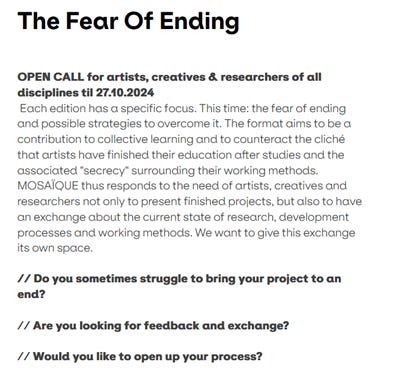
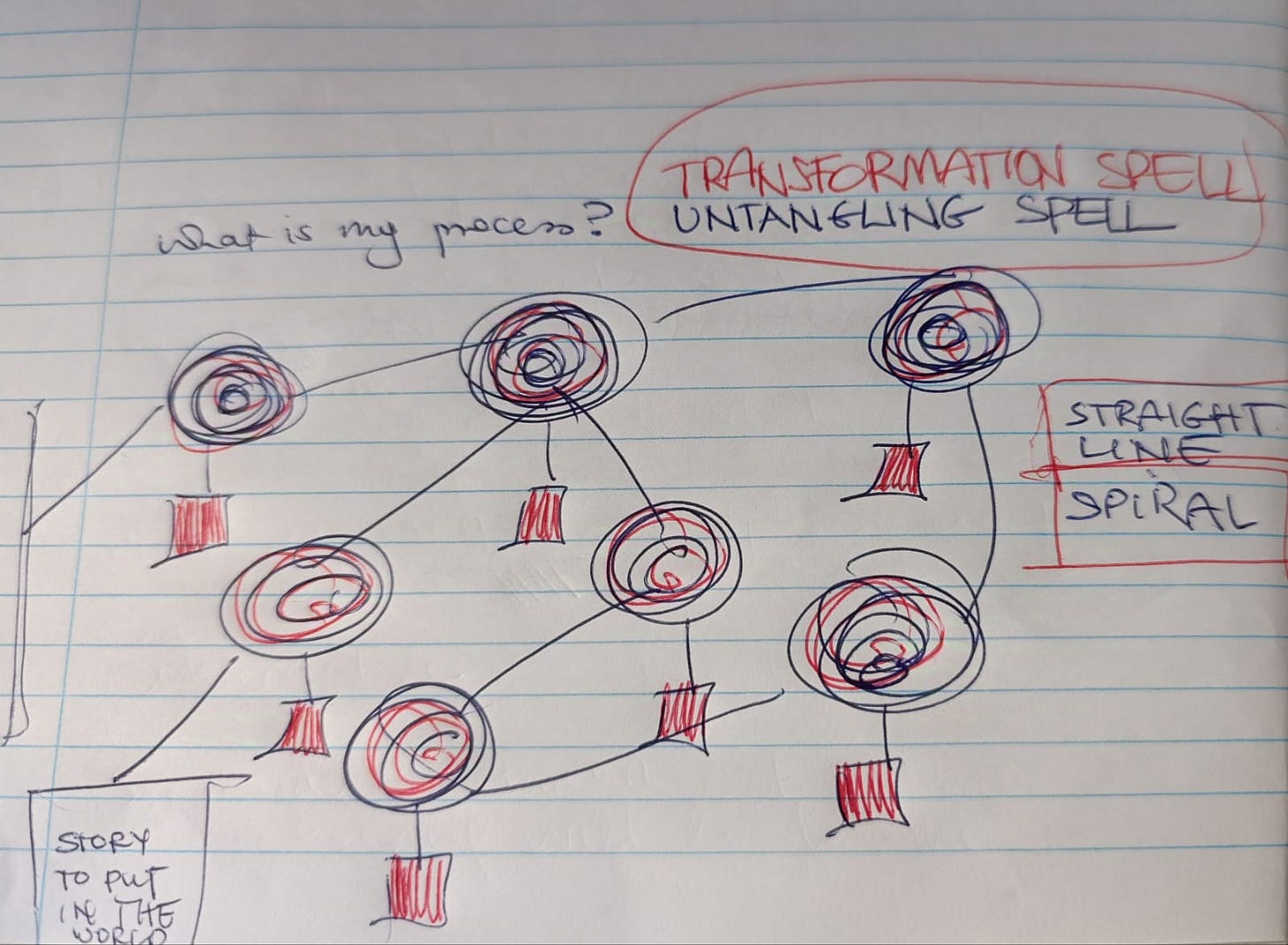

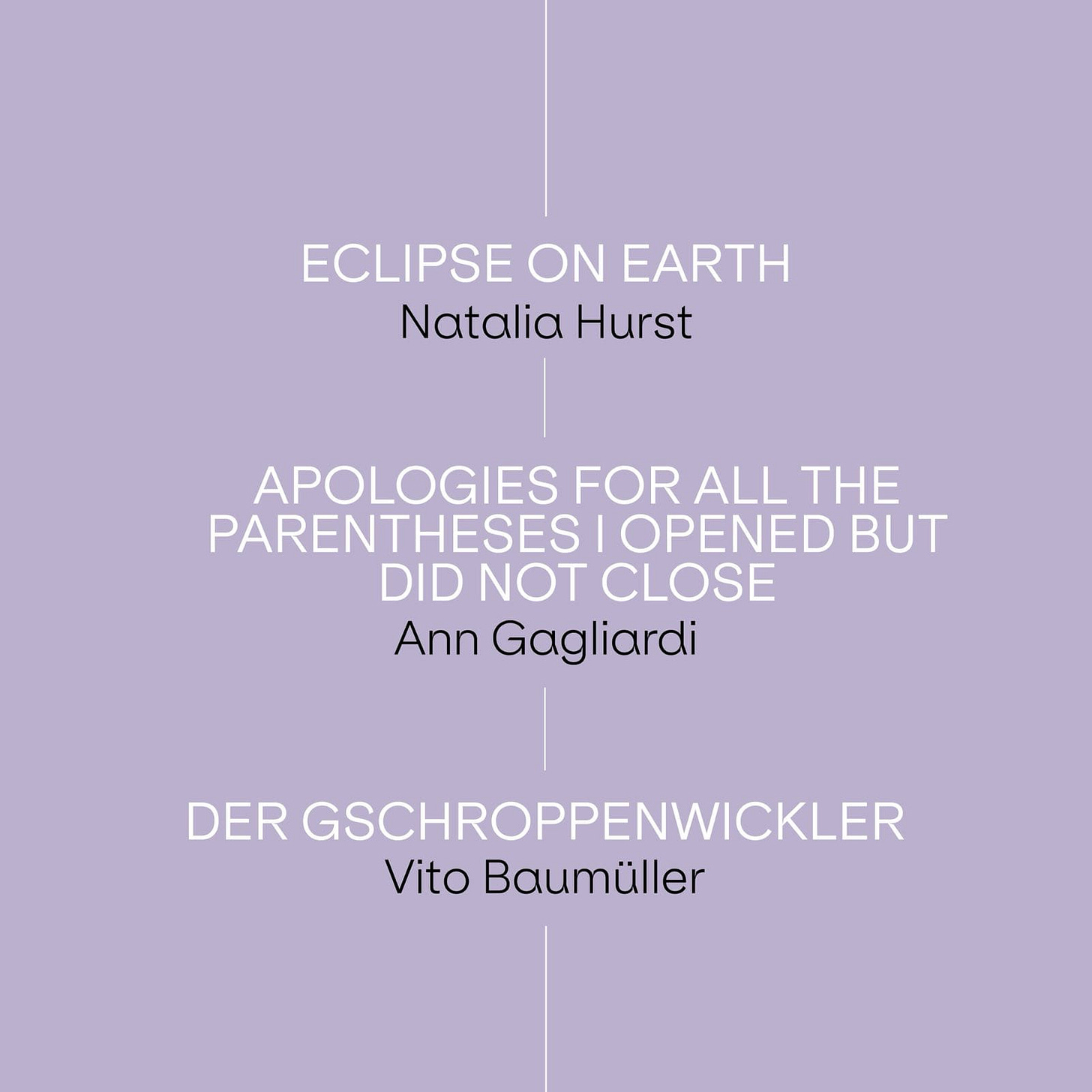
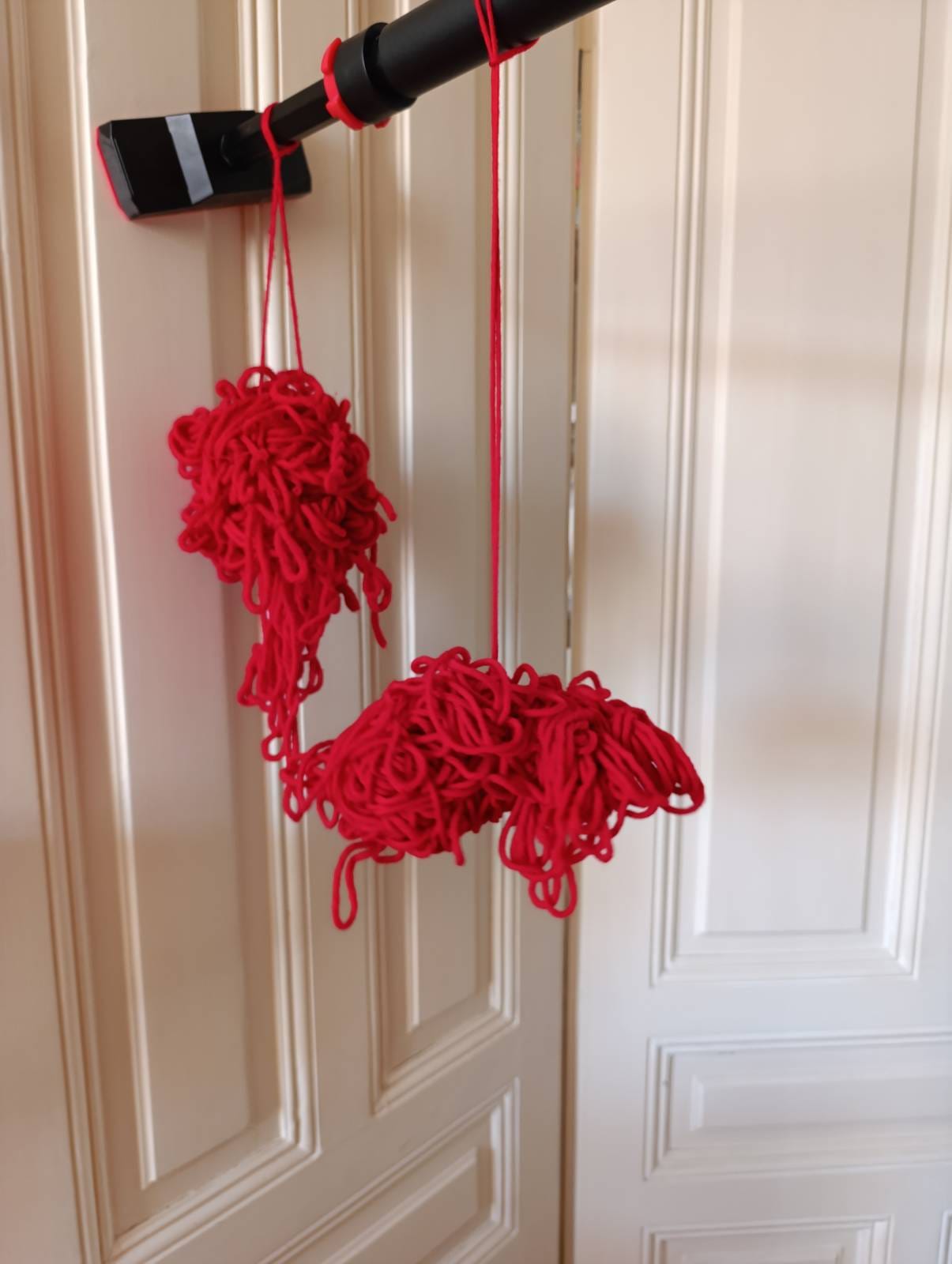
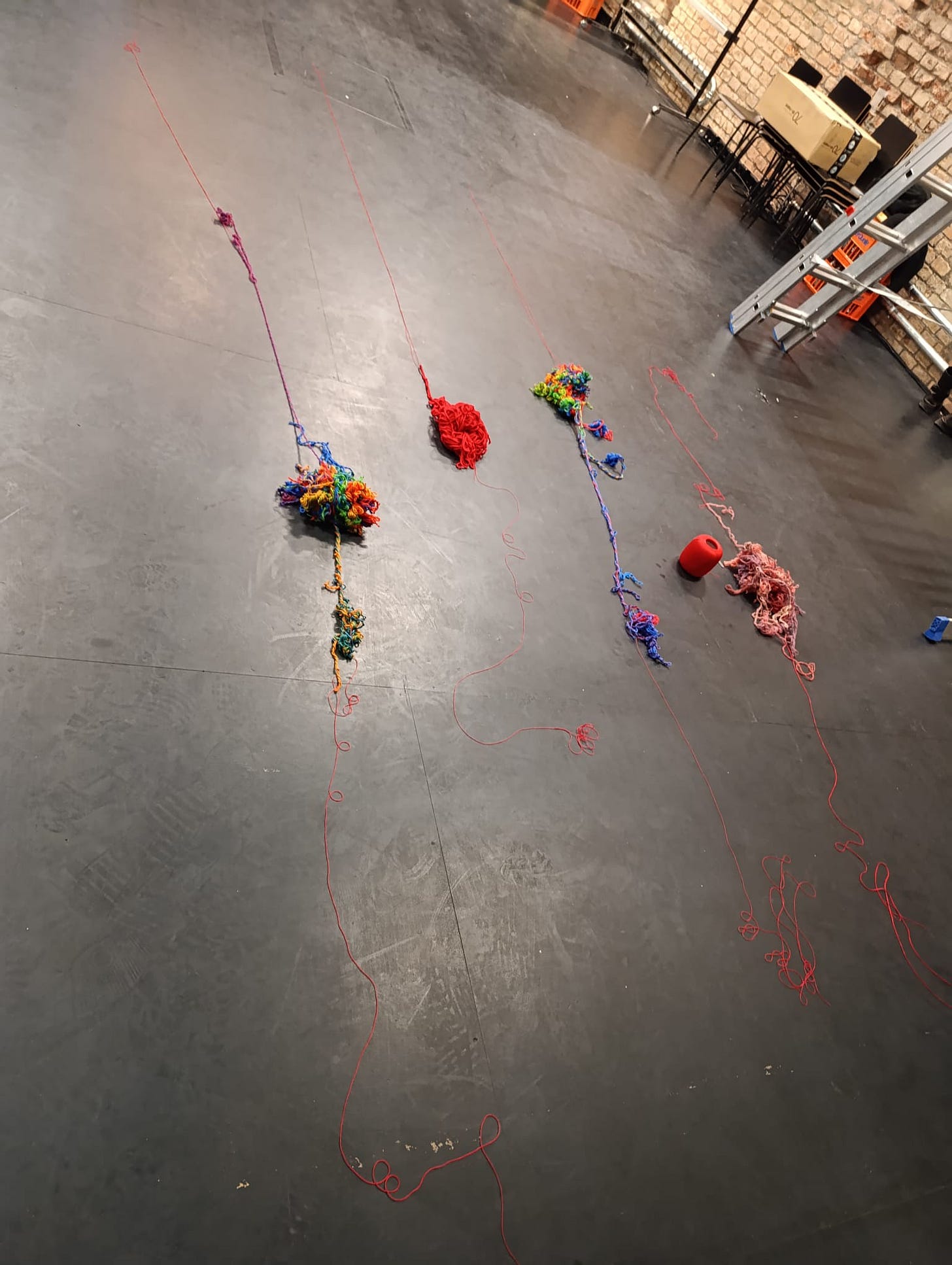
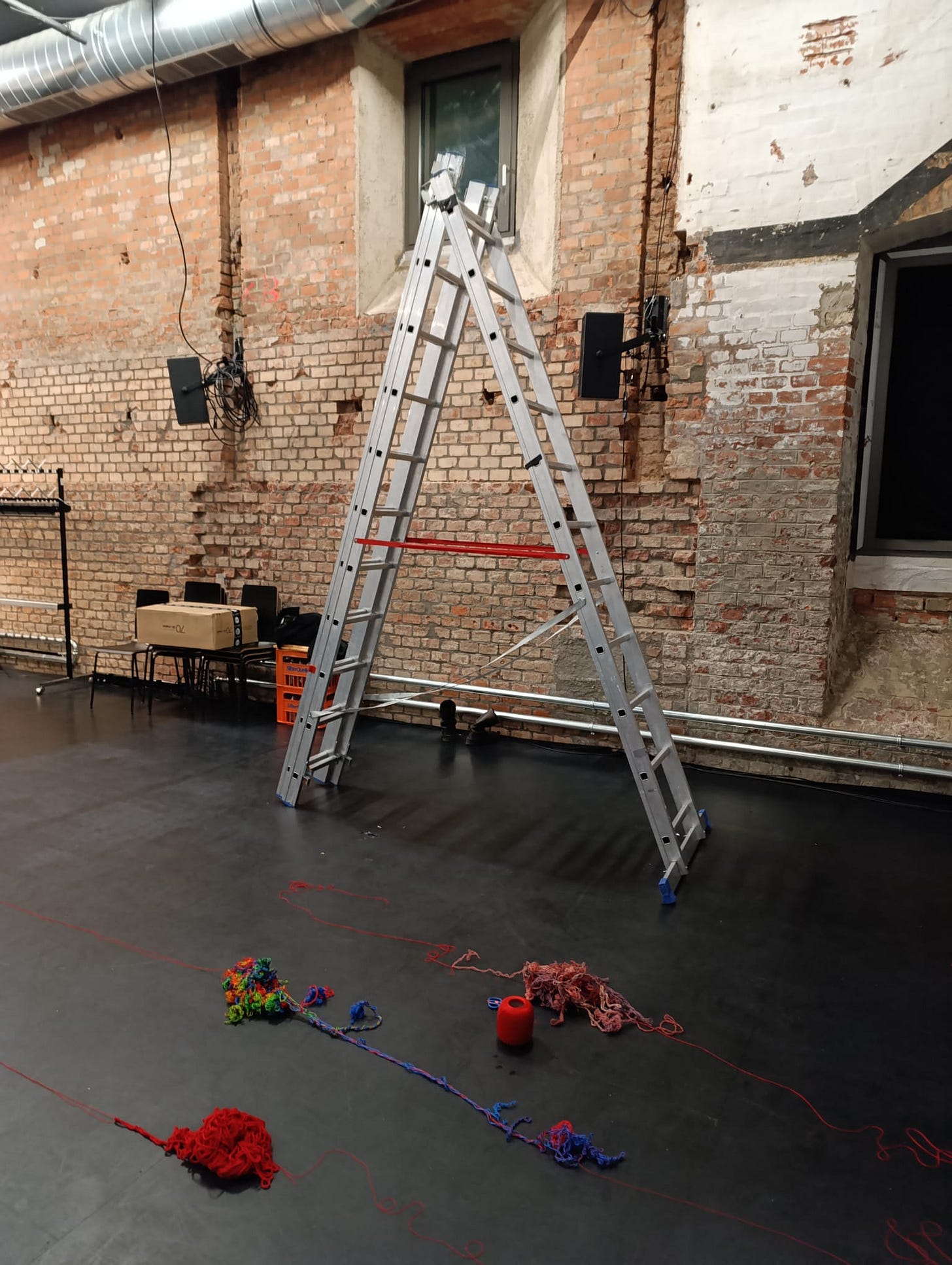
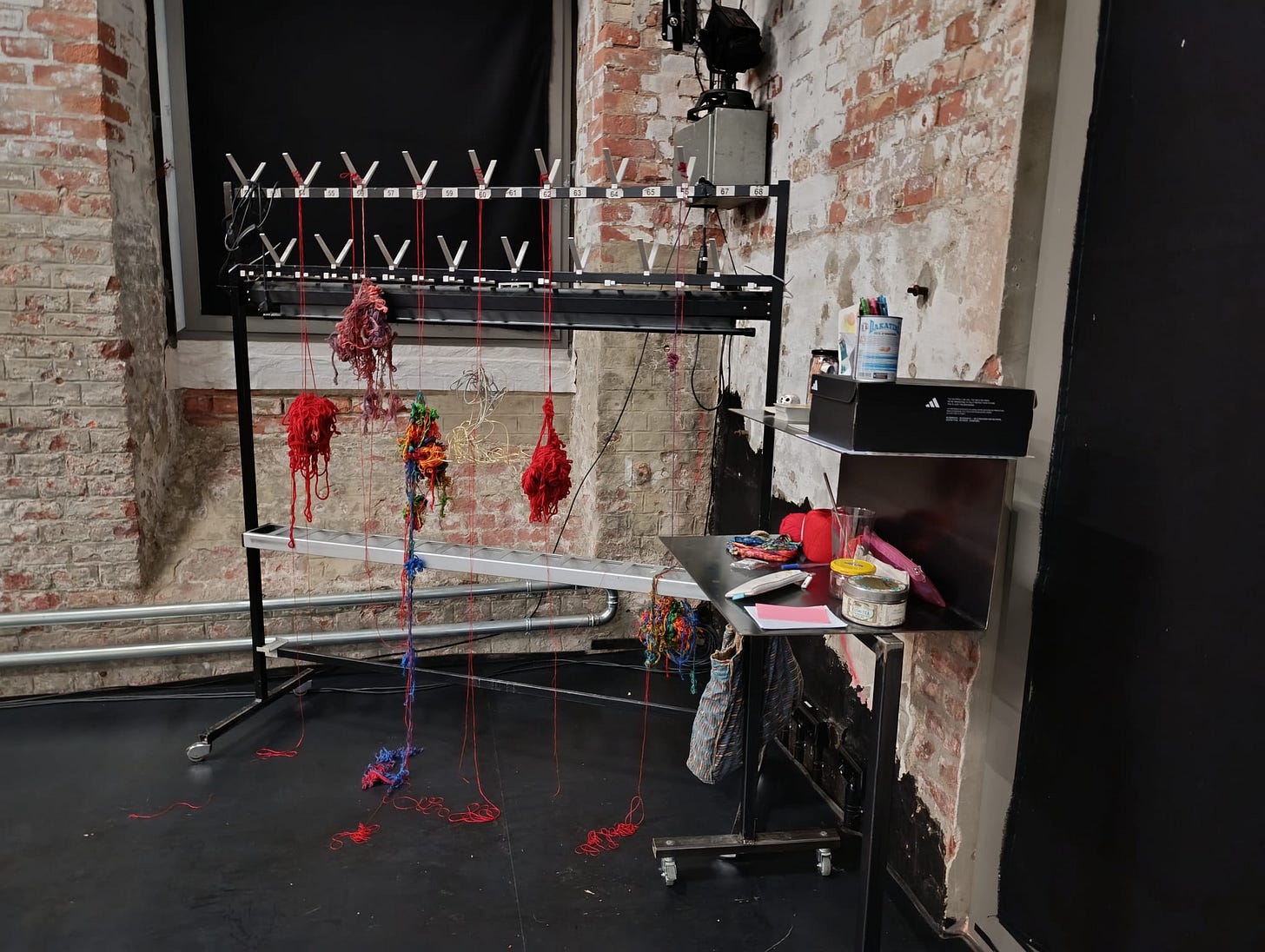
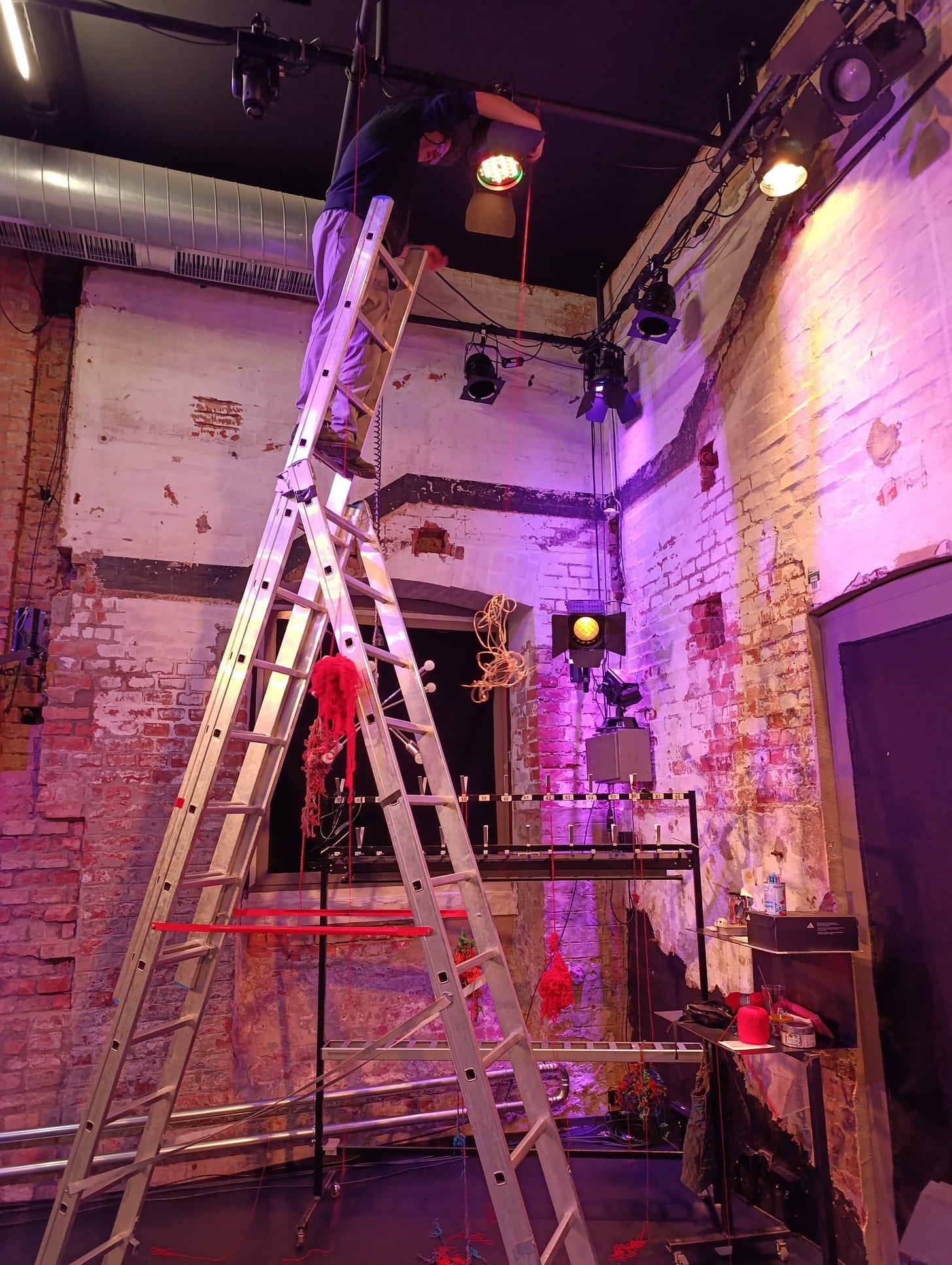
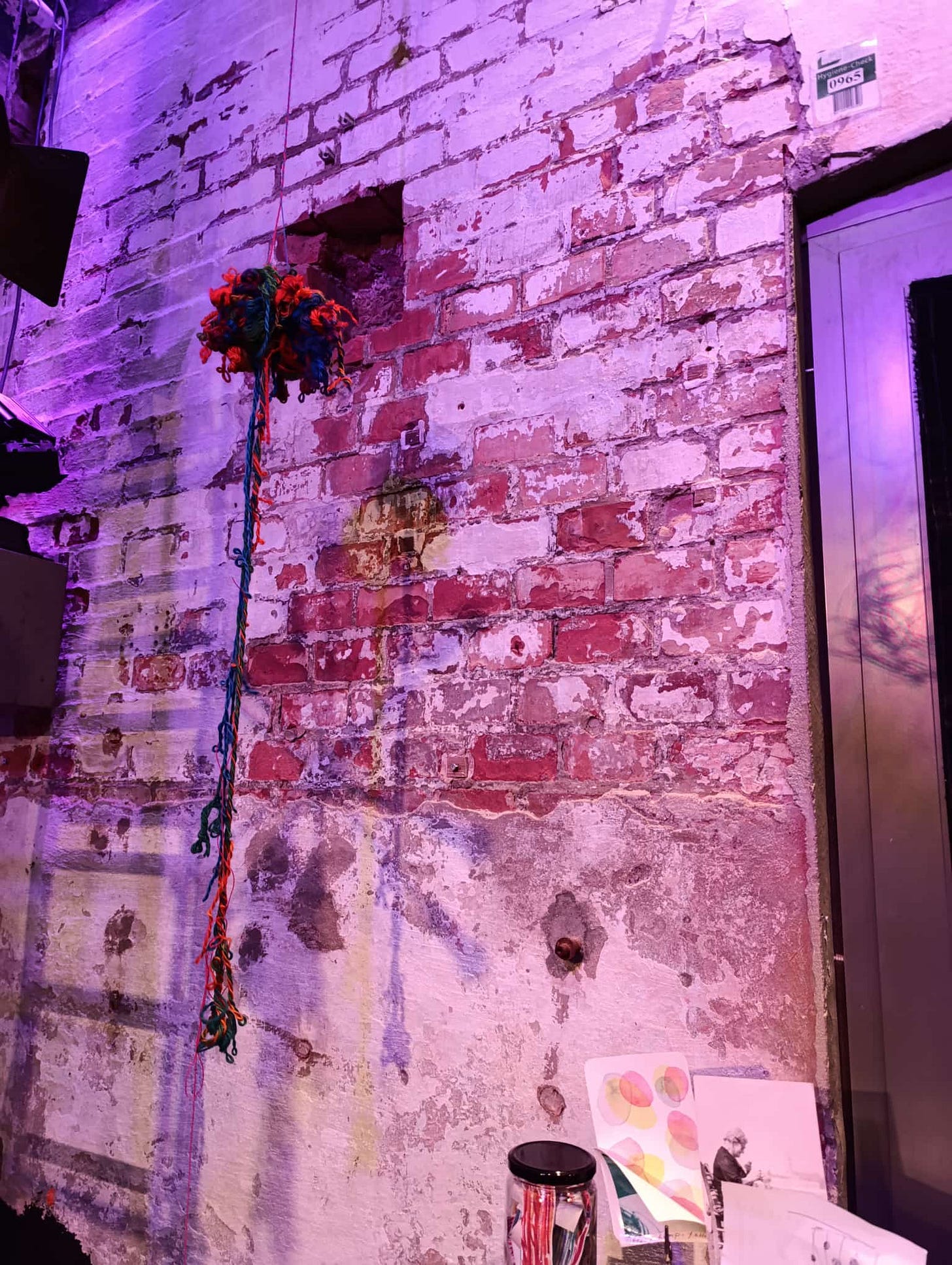
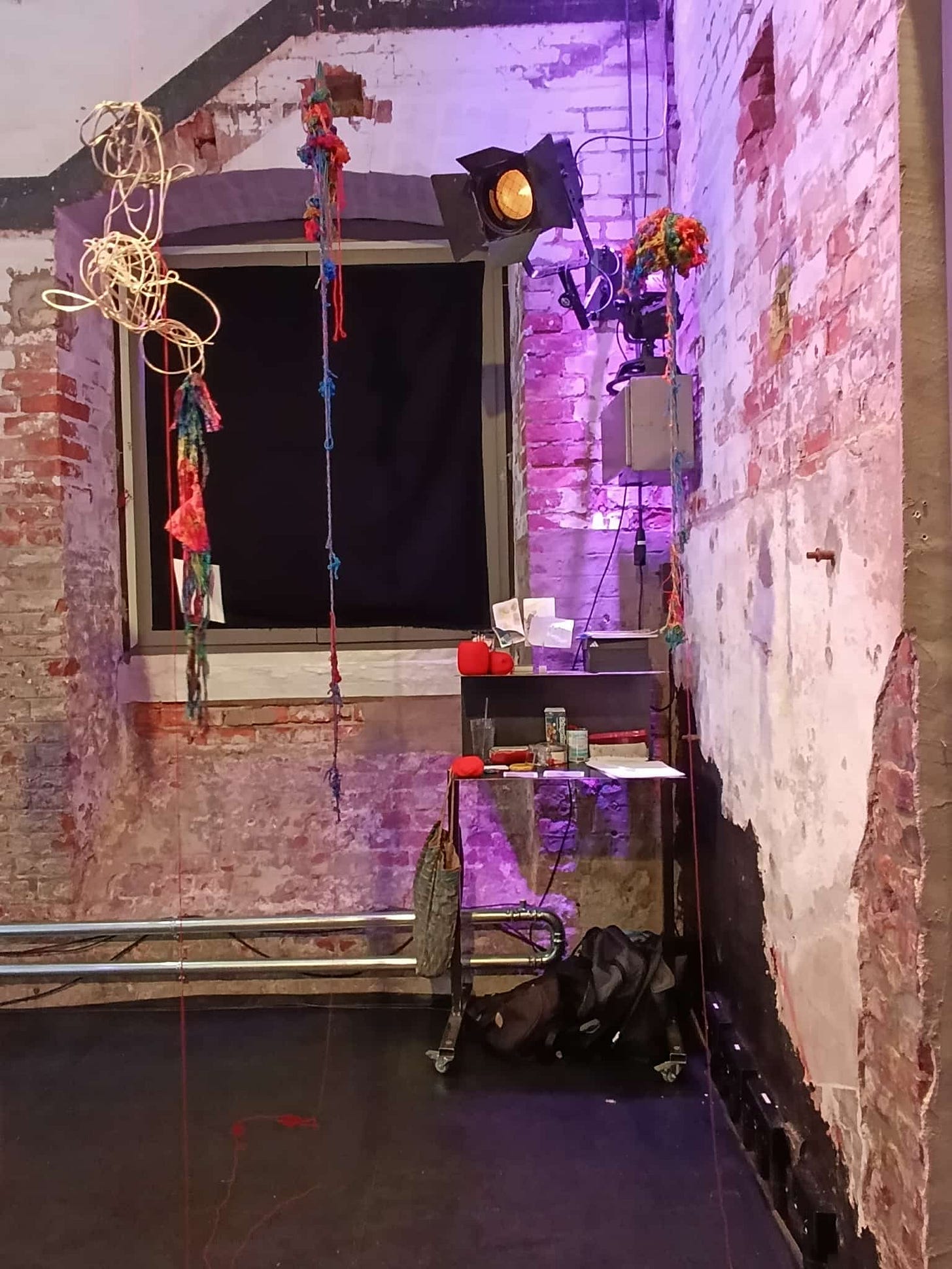
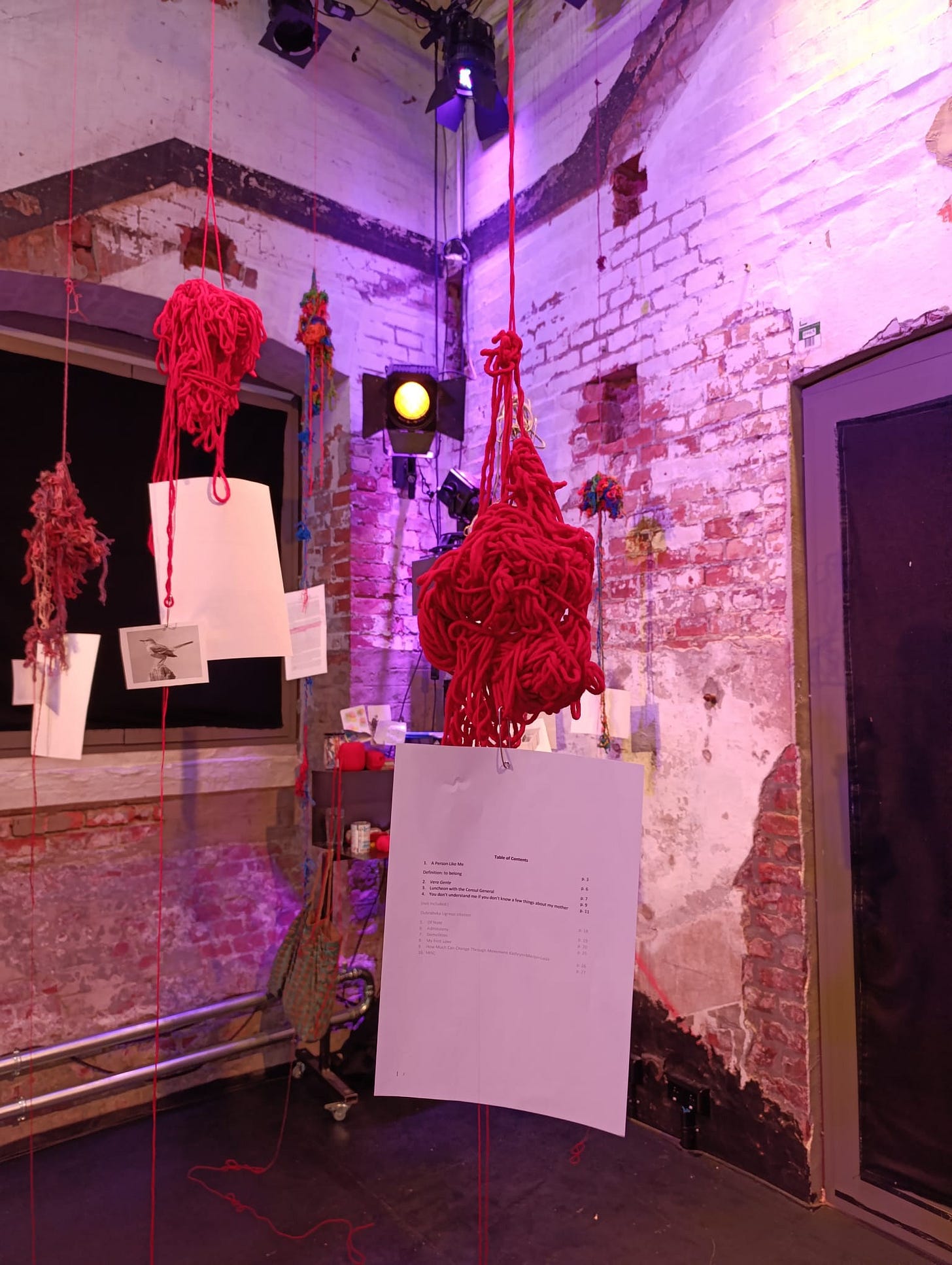
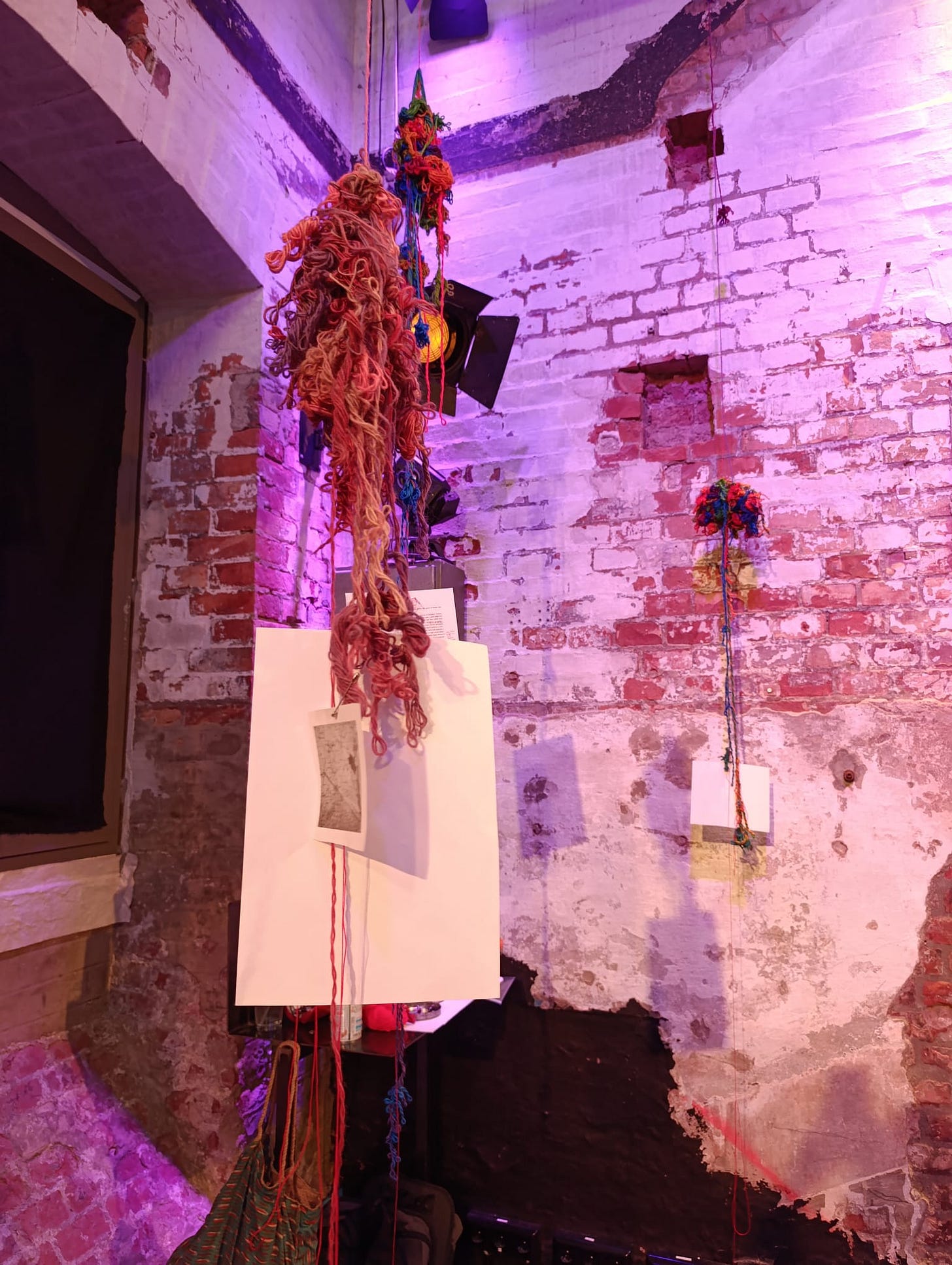
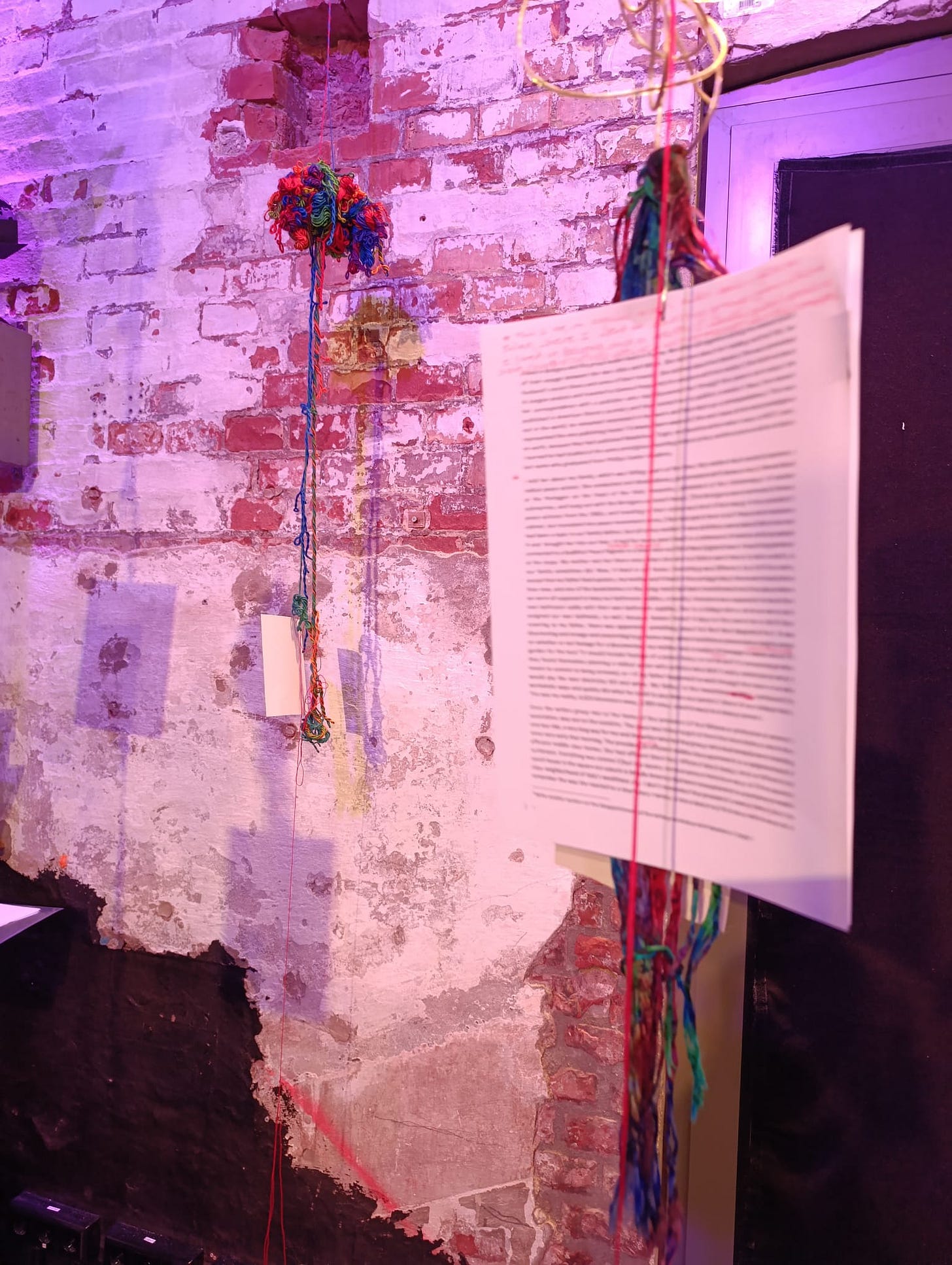
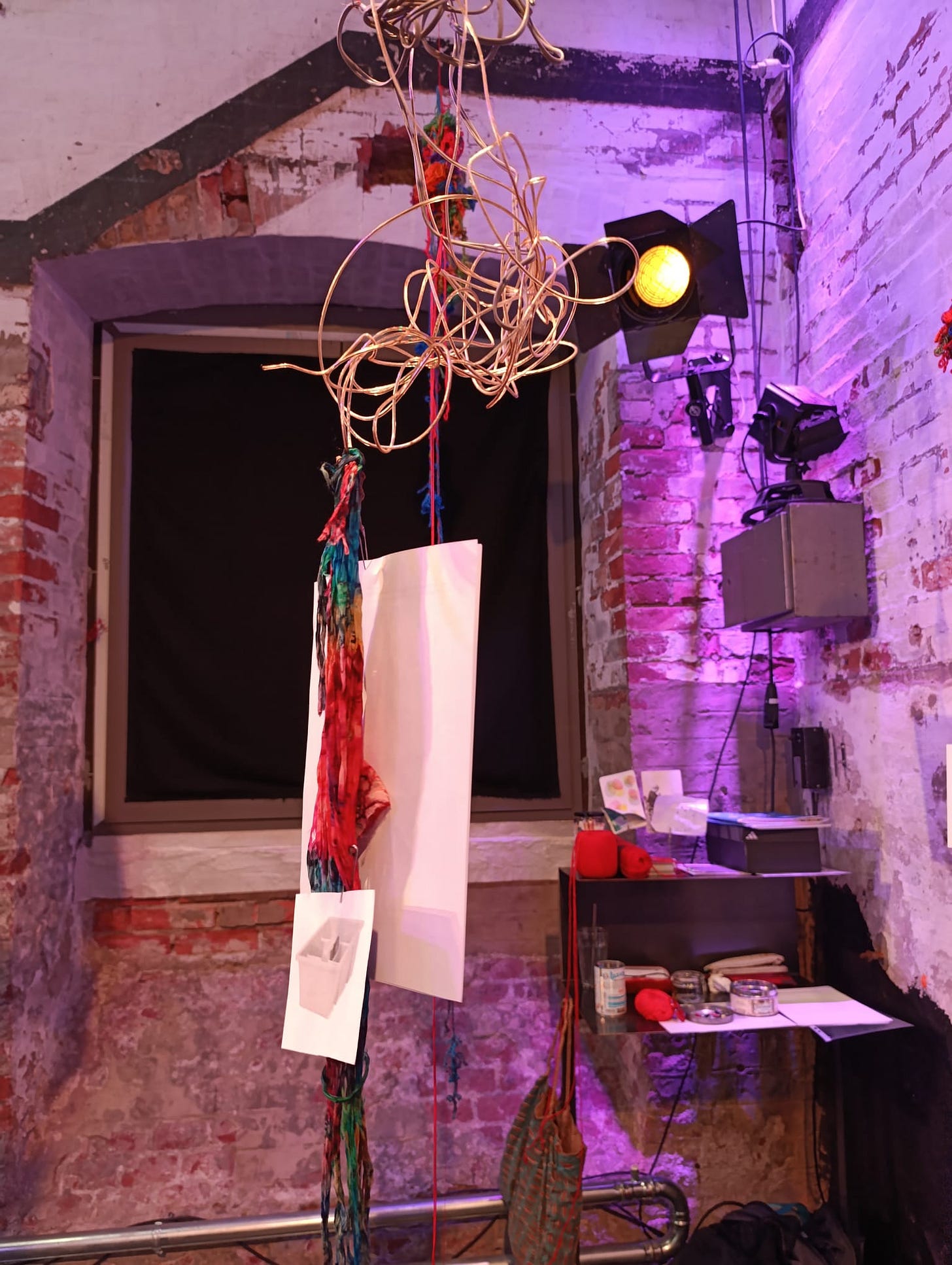
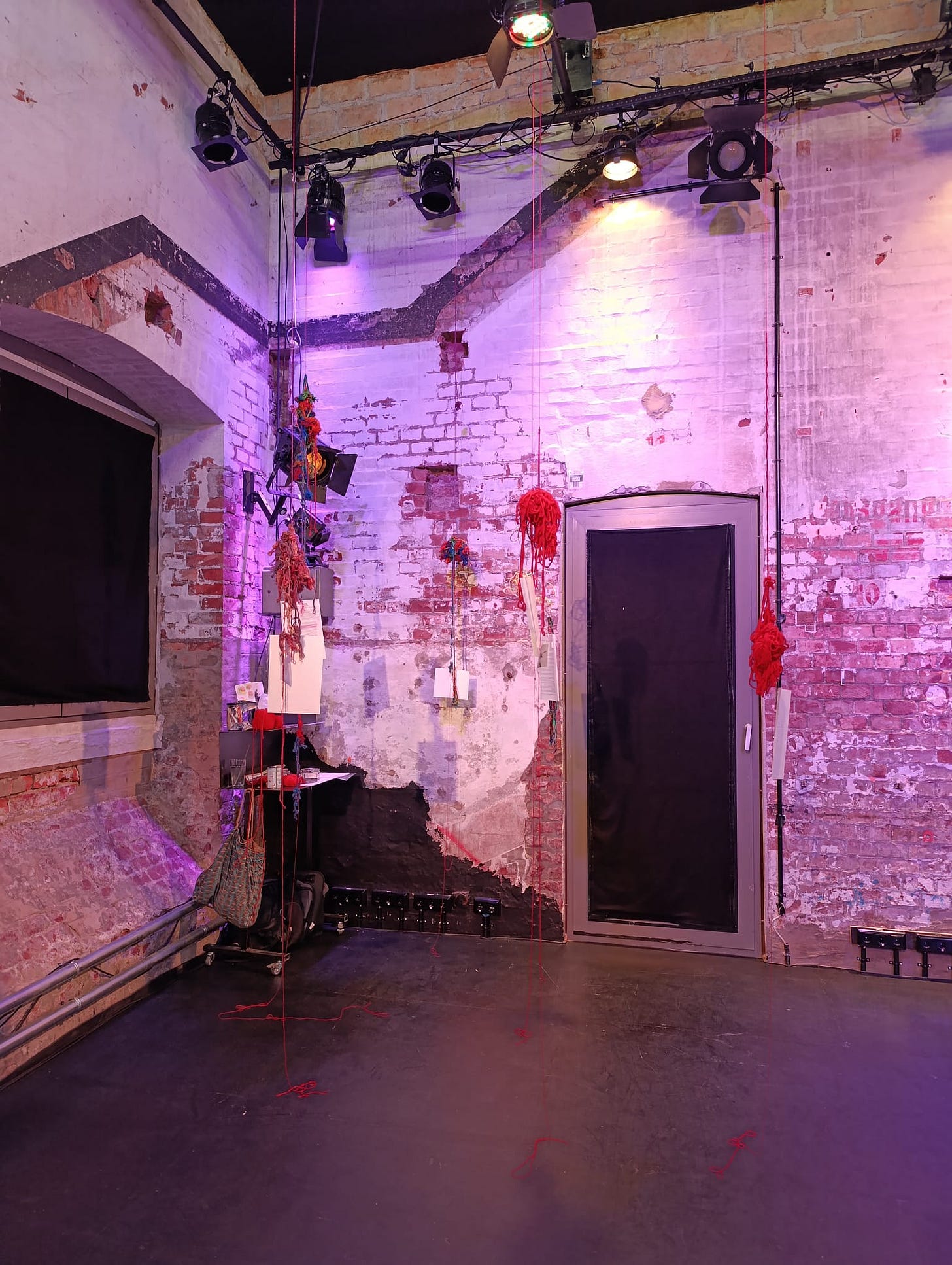
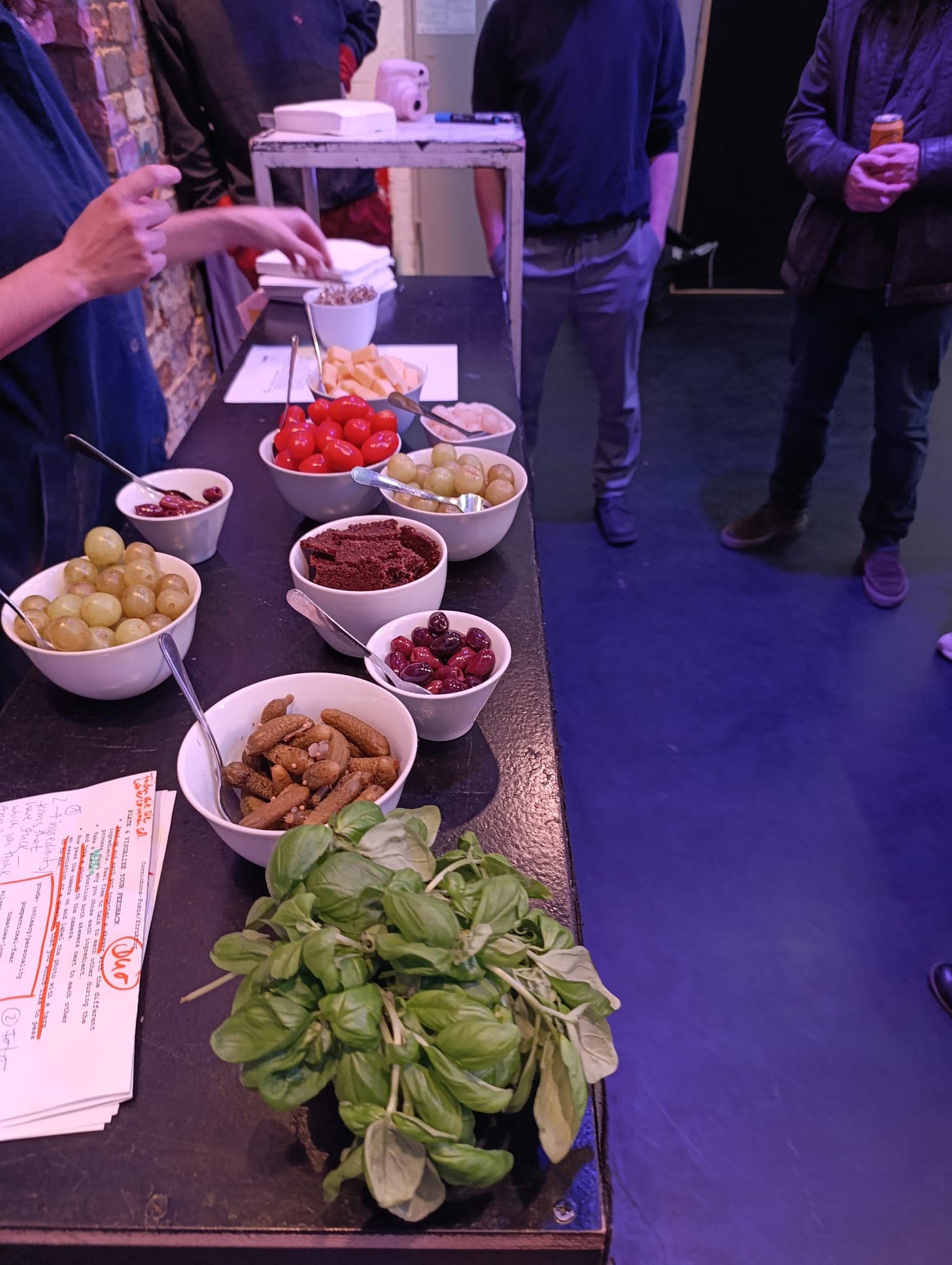
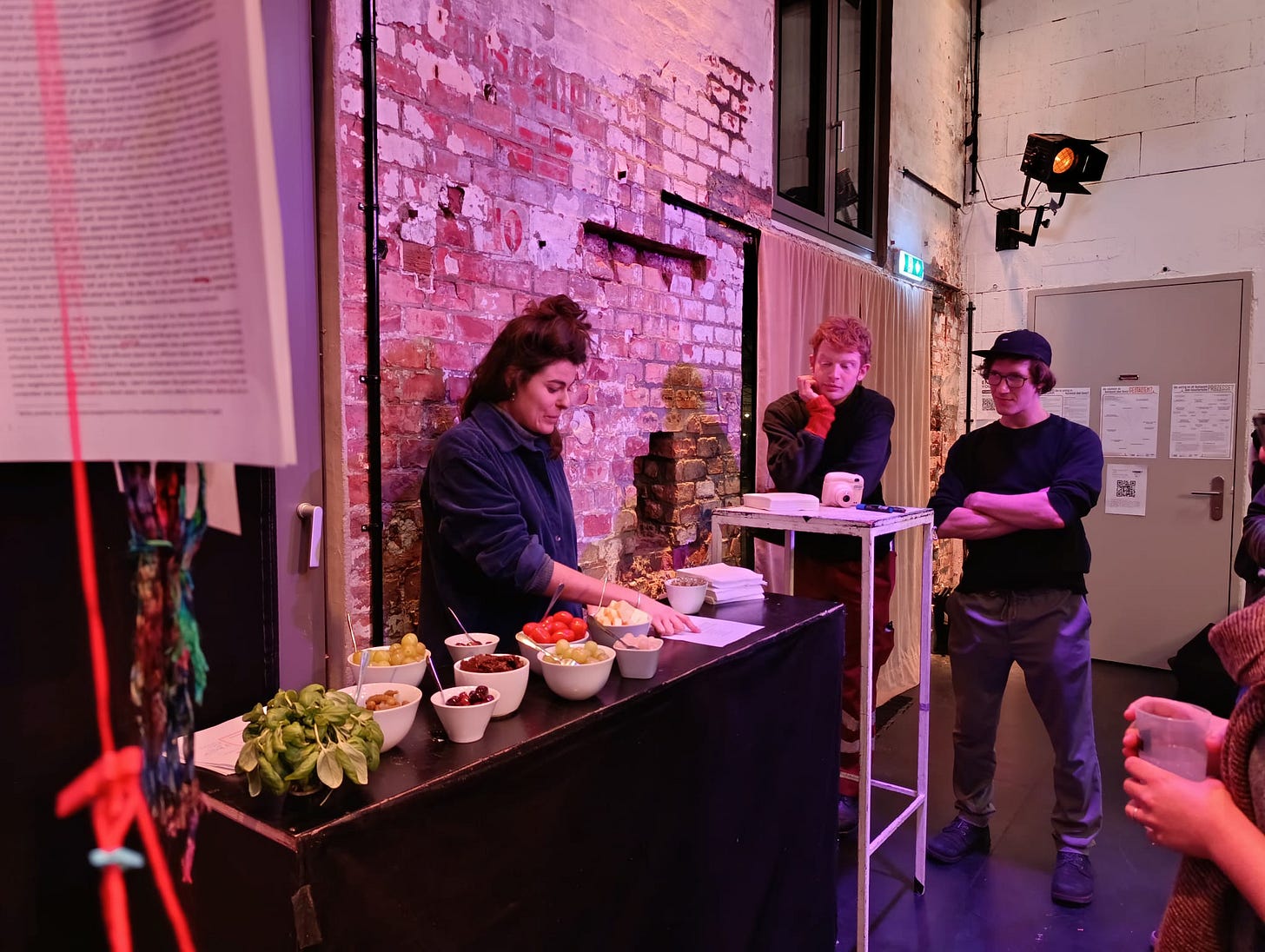
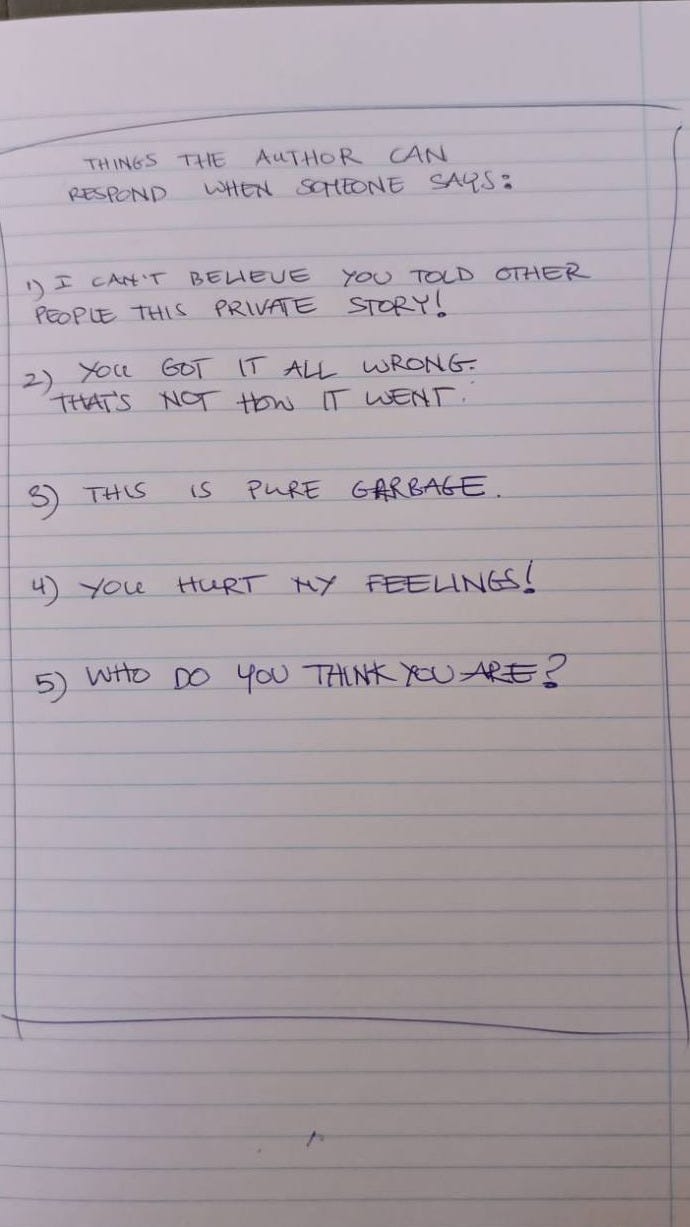
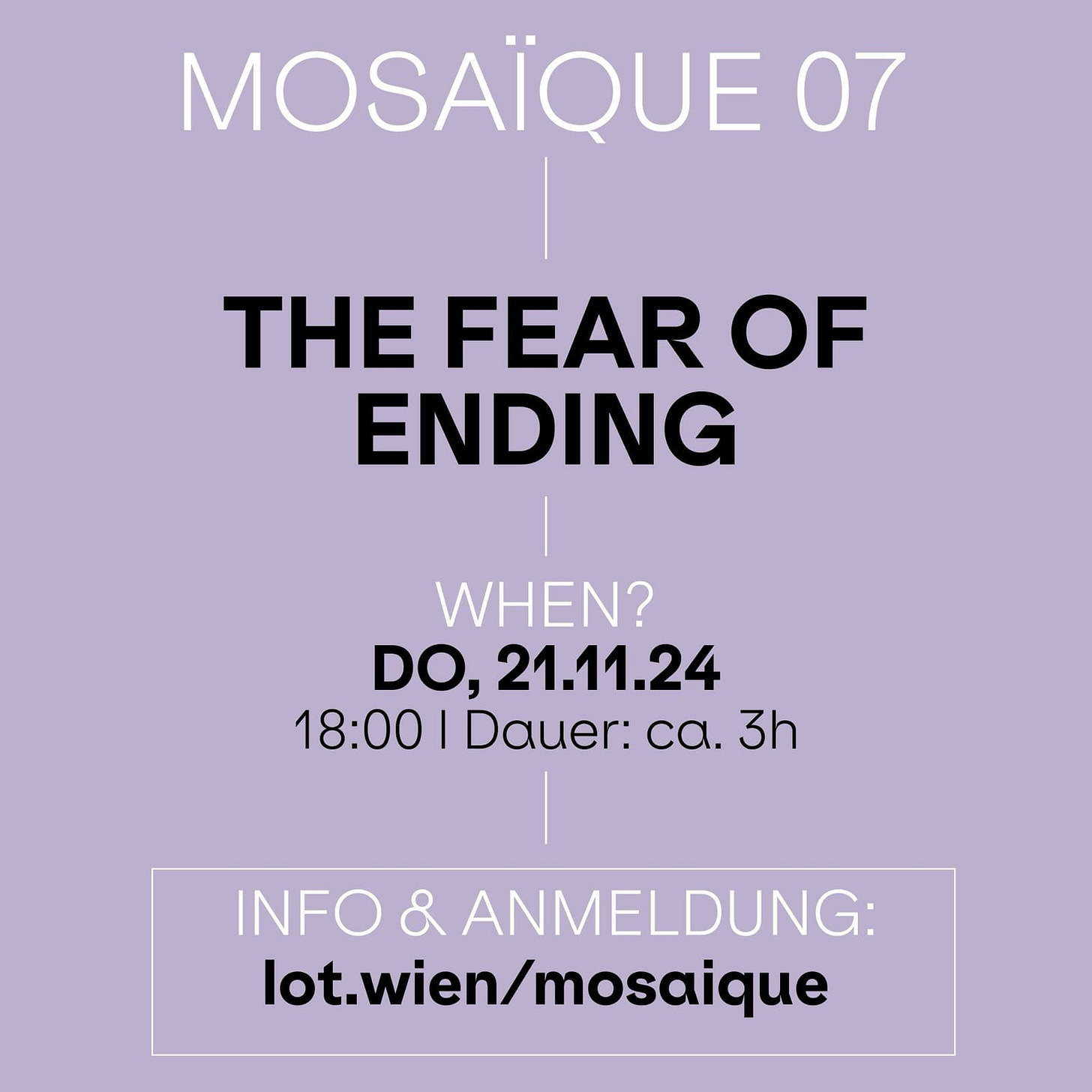
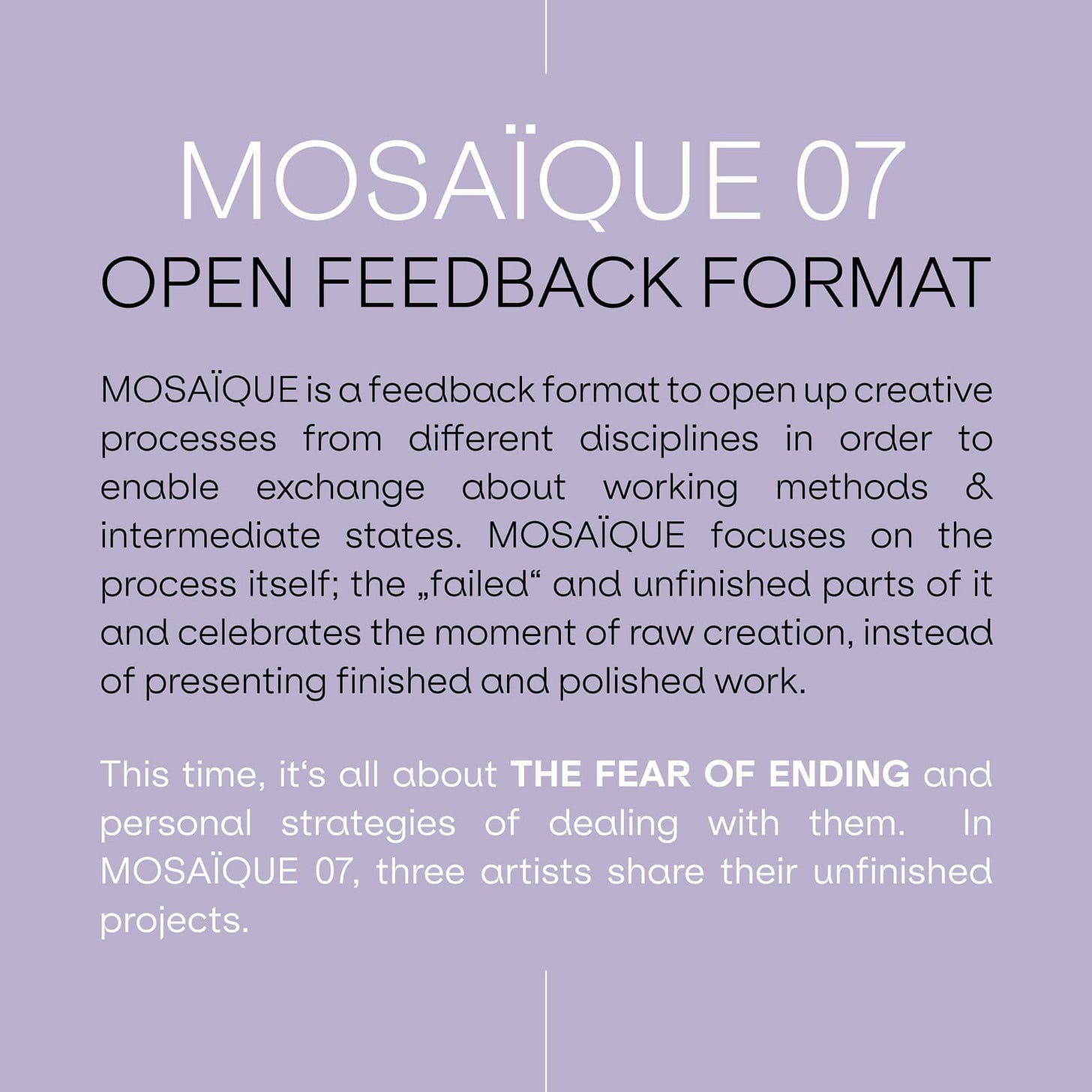
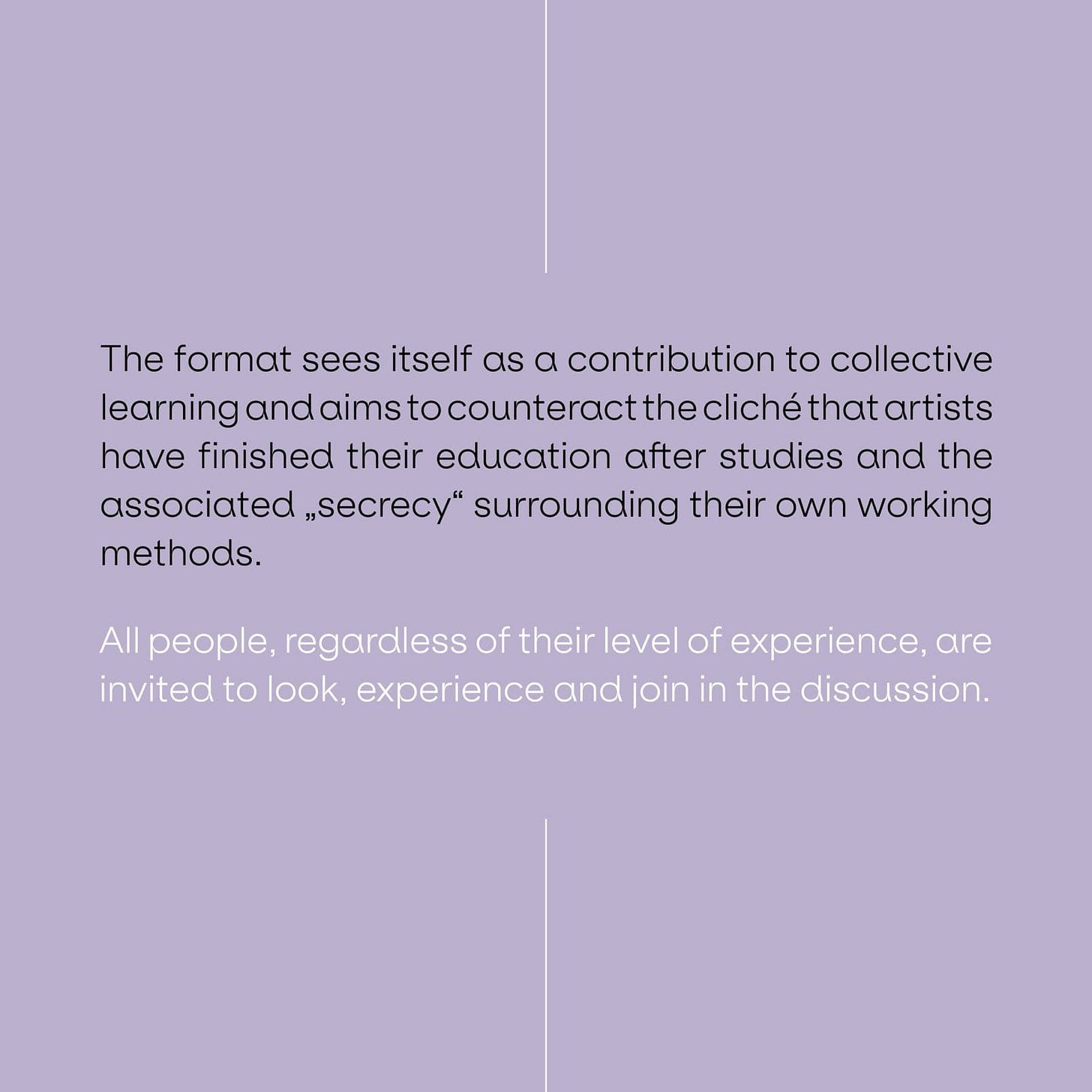
This was a fascinating reflection, and I am so here for this Substack and future installments!
I loved reading this first newsletter, grazie Ann. I found a lot to think about, x